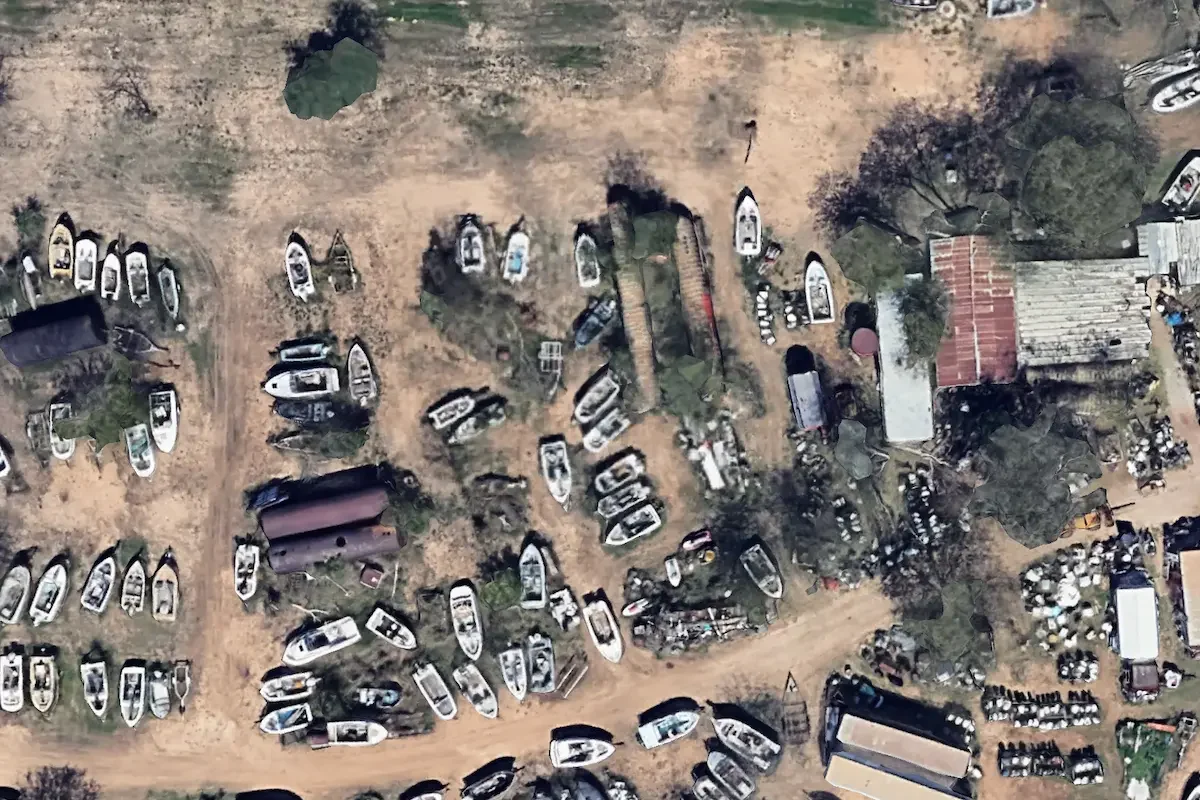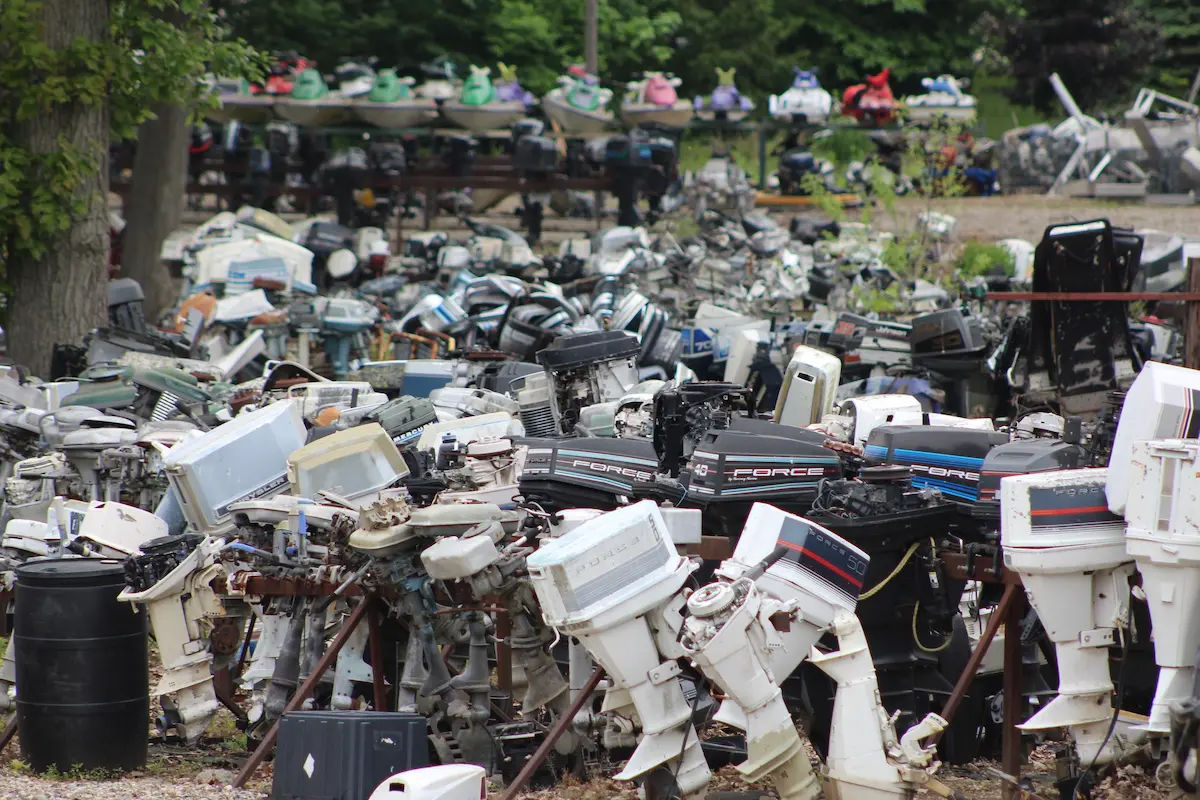Thermal imaging is a non-destructive testing technique that has been successfully used in many areas of industry, including yacht surveys.
Yacht owners and potential buyers are increasingly turning to thermal imaging technology to identify hidden problems in their vessels.
This technology allows surveyors to detect problems that are hard to identify using traditional surveying tools and equipment or are otherwise imperceptible.
Thermal imaging can be used on all hull materials to identify structural members of hulls constructed of fiberglass, wood, steel, and aluminum. It can locate trapped moisture in hulls and decks constructed of these materials, as well as moisture trapped around glassed-in chainplates on sailboats.
The use of thermographic imaging techniques in yacht surveys has become an essential tool for identifying problems before they become major issues.
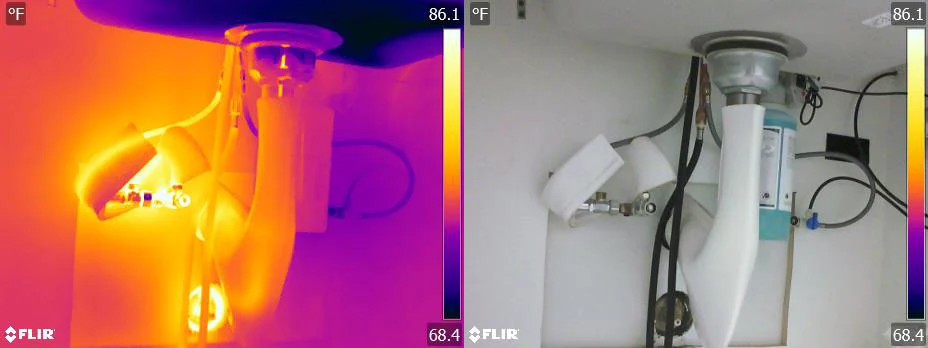
Sun Coast Marine Surveying is one of the companies that offer thermal imaging services for yacht surveys. They use the best technology available to ensure their surveyors have the necessary tools to provide accurate and reliable results. As the use of thermal imaging technology becomes more widespread in the marine industry, it is likely to become a standard tool for yacht surveys.
Understanding Thermal Imaging
Thermography and Its Importance
Thermography is a non-destructive testing method that involves the use of infrared (IR) technology to capture and analyze thermal patterns and temperatures across the surface of an object. This technique is often used in yacht surveys to detect and locate potential issues that may not be visible to the naked eye.
The importance of thermography lies in its ability to identify areas of concern before they become major problems. By detecting heat anomalies, such as hot spots or cold spots, thermography can help surveyors pinpoint areas that may require further investigation. This can save yacht owners time and money by allowing them to address issues before they become more serious.
Infrared (IR) Technology in Thermal Imaging
Infrared (IR) technology is a key component of thermal imaging. IR cameras are designed to detect the heat given off by all objects, regardless of their visible color or texture. This allows surveyors to capture detailed images of a yacht’s surface and identify areas of concern that may be invisible to the naked eye.
IR cameras convert the heat given off by objects into a two-dimensional monochrome or multi-color image. Thermal patterns are represented by varying shades of grey or color, with hotter areas appearing brighter and cooler areas appearing darker.
In yacht surveys, IR cameras can be used to identify structural members of hulls constructed of fiberglass, wood, steel, and aluminum. They can also be used to locate trapped moisture in hulls and decks, as well as moisture trapped around glassed-in chainplates on sailboats.
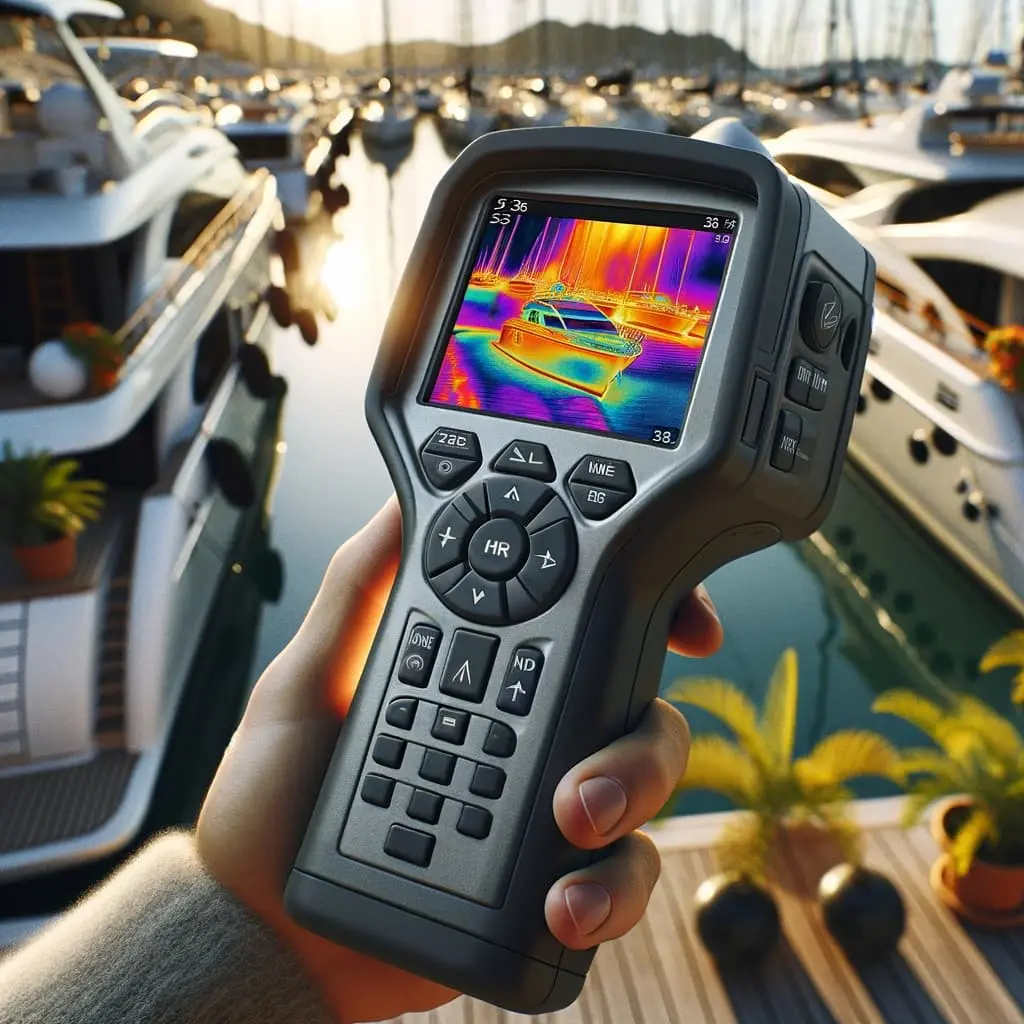
Overall, thermal imaging is a valuable tool in yacht surveys, allowing surveyors to detect and locate potential issues before they become major problems. By understanding the importance of thermography and the role of IR technology in thermal imaging, yacht owners can make informed decisions about the maintenance and upkeep of their vessels.
Role of Thermal Imaging in Yacht Surveys
Thermal imaging is a powerful tool used in yacht surveys to identify potential problems that may not be detectable using traditional surveying tools and equipment. These surveys are performed using non-destructive methods, meaning that as a general rule, components are not disassembled for inspection.
Pre-Purchase Yacht Survey
In pre-purchase yacht surveys, thermal imaging can identify issues such as delamination, moisture around fasteners, and trapped moisture in hulls and decks constructed of fiberglass, wood, steel, and aluminum.
It can also identify structural members of hulls made of these materials. Thermal imaging can locate moisture trapped around glassed-in chainplates on sailboats, which is a common problem area.

New Build and Refit Inspections
In new build and refit inspections, thermal imaging can be used to identify issues with the installation of new components, such as electrical wiring and plumbing. It can also identify issues with insulation and identify areas of heat loss or gain. This can save owners money in the long run by identifying issues before they become major problems.
Overall, thermal imaging is a valuable tool in yacht surveys. It can identify potential problems that may not be visible to the naked eye, and it can help save owners money by identifying issues before they become major problems.
Specific Applications of Thermal Imaging in Yachts
Identifying Overheating and Anomalies
Thermal imaging cameras are an essential tool in identifying overheating and anomalies in yachts. The cameras can detect temperature changes in electrical components, machinery, and other systems that are not visible to the naked eye. By detecting these temperature anomalies, corrective action can be taken before costly system failures occur.
Delamination and Moisture Detection
Thermal imaging cameras are also useful in detecting delamination and moisture in yachts.
Cracks in the gelcoat or poorly installed through-hull fittings and hatches can cause water to penetrate the laminate, which can lead to delamination and weakening of the hull structure. Thermal imaging cameras can detect the temperature differences caused by trapped moisture, allowing for early detection and repair of these issues.
Corrosion, Leaks, and Insulation Checks
Thermal imaging cameras are also effective in detecting corrosion, leaks, and insulation issues in yachts. The cameras can detect temperature differences caused by corrosion or leaks in pipes, tanks, and other systems.
This allows for early detection and repair of these issues, preventing further damage. Insulation checks can also be performed using thermal imaging cameras to detect areas of heat loss or gain, which can lead to energy inefficiencies.
In conclusion, thermal imaging cameras are a valuable tool in yacht surveys. They can detect temperature anomalies that are not visible to the naked eye, allowing for early detection and repair of issues. They are useful in identifying overheating, delamination, moisture, corrosion, leaks, and insulation issues. By using thermal imaging cameras, yacht owners can ensure the safety and longevity of their vessels.
Thermal Imaging of Yacht Components
Thermal imaging is a non-destructive testing technique that uses infrared radiation to detect temperature differences in objects. In yacht surveys, thermal imaging is a valuable tool for identifying potential issues with various components of the vessel. Here are some of the areas where thermal imaging can be used in yacht surveys:
Engine and Machinery
Thermal imaging can be used to identify overheating components in yacht engines and machinery. By detecting temperature differences, the surveyor can pinpoint potential issues with bearings, pumps, and other mechanical components. This can help prevent costly breakdowns and downtime, as well as ensure the safety of the vessel and its passengers.
Hull and Decks
Thermal imaging can also be used to detect potential issues with the hull and decks of a yacht. By identifying temperature differences, the surveyor can locate areas where water may be trapped, which can lead to corrosion and other structural issues. This can help prevent costly repairs and ensure the safety of the vessel.
Electrical Systems
Thermal imaging is also useful in identifying potential issues with electrical systems on a yacht. By detecting temperature differences, the surveyor can locate potential hot spots in wiring and other electrical components.
This can help prevent electrical fires and other safety issues, as well as ensure the proper functioning of the vessel’s electrical systems.
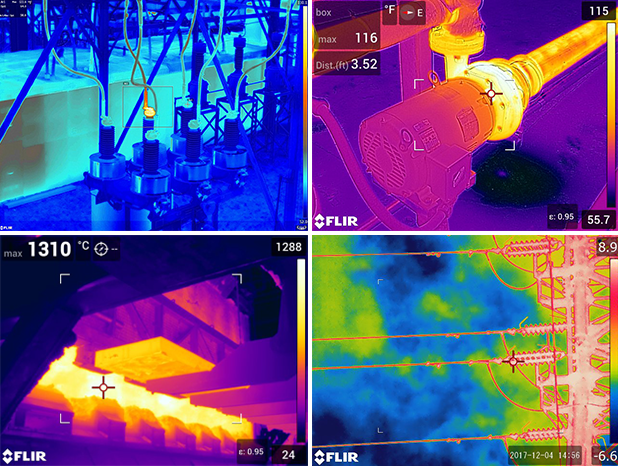
Overall, thermal imaging is a valuable tool in yacht surveys for identifying potential issues with various components of the vessel. By detecting temperature differences, surveyors can pinpoint potential issues with engines, machinery, hulls, decks, and electrical systems. This can help prevent costly repairs and ensure the safety of the vessel and its passengers.
Materials in Yacht Construction and Their Thermal Imaging
Fiberglass and Composite
Fiberglass and composite materials are commonly used in yacht construction due to their lightweight and durable nature. However, these materials can be susceptible to moisture intrusion, which can lead to structural damage if left untreated.
Thermal imaging can be used to detect moisture intrusion in fiberglass and composite materials. The thermal camera can detect temperature differences in the material, which can indicate the presence of moisture.
Wood
Wood is a traditional material used in yacht construction, and it can be prone to rot and decay if not properly maintained. Thermal imaging can be used to detect moisture intrusion in wooden structures.
The camera can detect temperature differences in the wood, which can indicate the presence of moisture. This can help yacht surveyors identify areas that require repair or maintenance.
Steel and Aluminum
Steel and aluminum are commonly used in yacht construction due to their strength and durability. However, these materials can be susceptible to corrosion and other forms of damage.
Thermal imaging can be used to detect corrosion and other forms of damage in steel and aluminum structures. The camera can detect temperature differences in the metal, which can indicate the presence of corrosion or other forms of damage.
In conclusion, thermal imaging is a valuable tool for yacht surveyors to detect moisture intrusion, corrosion, and other types of damage in yacht structures. By using thermal imaging, surveyors can identify areas that require repair or maintenance, which can help prevent further damage and prolong the life of the yacht.
Costs and Efficiency of Thermal Imaging in Yacht Surveys
Costs and Potential Savings
Thermal imaging is a non-destructive testing technique that allows yacht surveyors to detect anomalies and identify potential problems in a yacht’s systems and structures. While it is an effective tool, it does come at a cost.
The cost of a thermal imaging survey varies depending on the size of the yacht, the number of systems to be inspected, and the complexity of the inspection.
However, it is important to note that this cost can be offset by the potential savings that can be achieved through early detection of issues.
Early detection of issues can save yacht owners thousands of dollars in repairs and replacements. For instance, the detection of a small leak in the engine cooling system can prevent the engine from overheating and potentially causing catastrophic damage.
Similarly, the detection of a small crack in the hull can prevent water from entering and causing structural damage. Therefore, while the cost of a thermal imaging survey may seem high, it can potentially save yacht owners a significant amount of money in the long run.
Efficiency and Accuracy
Thermal imaging is an efficient and accurate technique for detecting anomalies and identifying potential problems in a yacht’s systems and structures. It allows surveyors to quickly and easily identify areas of concern without the need for invasive testing or disassembly. This can save time and reduce the risk of damage to the yacht during the survey.
Furthermore, thermal imaging is a highly accurate technique that can identify issues that may not be visible to the naked eye. For instance, it can detect temperature variations in electrical systems that may be indicative of a potential issue. It can also detect moisture intrusion in the hull or deck, which can be an early sign of structural damage.
Overall, while thermal imaging may come at a cost, it is an efficient and accurate technique that can potentially save yacht owners a significant amount of money in the long run. Its ability to detect issues early and accurately makes it a valuable tool for yacht surveyors and owners alike.
Marine Surveying and Consulting
Role of Marine Surveyors
Marine surveying is a crucial aspect of the yachting industry. It involves the inspection and assessment of a vessel’s condition, structure, and safety. Marine surveyors play a vital role in ensuring that yachts are seaworthy and meet all safety requirements. They are responsible for identifying any issues or potential problems that may arise during the yacht’s operation.
Surveyors must possess a vast knowledge of yacht construction, engineering, and design. They must also have experience in the marine industry and be familiar with all relevant regulations and standards. Surveyors must be able to provide accurate and reliable information to yacht owners, insurance companies, and other stakeholders.
Experience and Expertise Required
To become a marine surveyor, one must have a combination of education and experience. Many surveyors have a background in naval architecture, marine engineering, or a related field. They may also have experience working in the yachting industry, such as yacht building or repair.
Surveyors must also possess specific skills and expertise, such as knowledge of materials and construction techniques, familiarity with marine systems and equipment, and the ability to identify and diagnose problems. They must be able to communicate effectively with clients and stakeholders and provide clear and concise reports.
Consulting is also an essential aspect of marine surveying. Surveyors may provide consulting services to yacht owners, builders, and other stakeholders. They may advise on yacht design and construction, safety regulations, and maintenance and repair issues. Consulting services can help yacht owners and stakeholders make informed decisions and ensure that their vessels are safe and seaworthy.
In conclusion, marine surveying and consulting are critical aspects of the yachting industry. Surveyors play a vital role in ensuring that yachts are safe and meet all relevant regulations and standards. They must possess a combination of education, experience, and expertise to provide accurate and reliable information to clients and stakeholders.
Insurance and Legal Aspects
When it comes to yacht surveys, insurance and legal aspects play a crucial role. A professional marine surveyor can help determine the value of the boat and identify any potential issues that may impact the boat’s insurance coverage.
Thermal imaging surveys can be particularly useful in identifying potential issues that may not be visible to the naked eye, such as corrosion, moisture intrusion, and electrical faults. By detecting these issues early on, yacht owners can take proactive measures to address them and prevent further damage, which can ultimately help reduce insurance claims and costs.
Additionally, some insurance companies may require a thermal imaging survey as part of the boat’s insurance coverage. This can help ensure that the boat is in good condition and minimize the risk of insurance claims.
It is also important to note that VAT (Value Added Tax) may apply to yacht surveys, including thermal imaging surveys. Yacht owners should consult with a tax professional to determine whether VAT applies to their particular situation.
Overall, incorporating thermal imaging surveys into yacht surveys can provide valuable information for insurance and legal purposes. By detecting potential issues early on, yacht owners can take proactive measures to address them and minimize the risk of insurance claims and costs.
Future of Thermal Imaging in Yacht Surveys
As yacht owners strive to keep their vessels in prime condition, the use of thermal imaging technology in marine surveys has become increasingly popular. The technology has been used to great effect in identifying issues that may not be visible to the naked eye, such as overheating electrical equipment, identifying delamination on fiberglass boats, and inspecting cooling and exhaust systems.
In the future, the use of thermal imaging in yacht surveys is expected to become even more widespread. One area of development is active thermography, which involves the use of an external heat source to create a thermal image. This technology can be used to identify issues such as hidden corrosion, water ingress, and structural defects.
Another area of development is the use of thermal imaging in conjunction with other technologies, such as drones and artificial intelligence.
Thermal imaging cameras mounted on drones can provide a bird’s eye view of a vessel, allowing for a more comprehensive survey. Artificial intelligence can be used to analyze thermal images and identify potential issues, making the survey process more efficient and accurate.
Overall, the future of thermal imaging in yacht surveys looks bright, with new technologies and applications constantly being developed. As the technology continues to evolve, it is likely that it will become an even more essential tool for yacht owners and surveyors alike.
- 10 Boat Salvage Yards in California – January 25, 2025
- 13 Boat Salvage Yards in Texas – January 18, 2025
- 7 Boat Salvage Yards in Michigan – January 15, 2025


